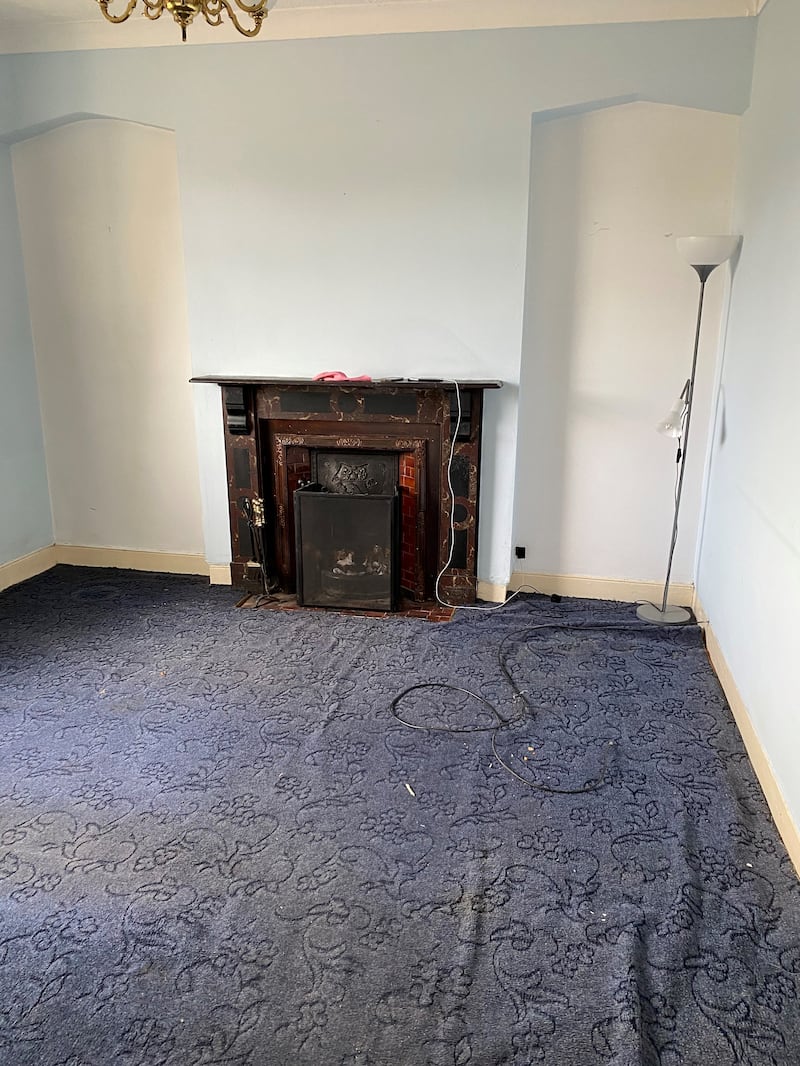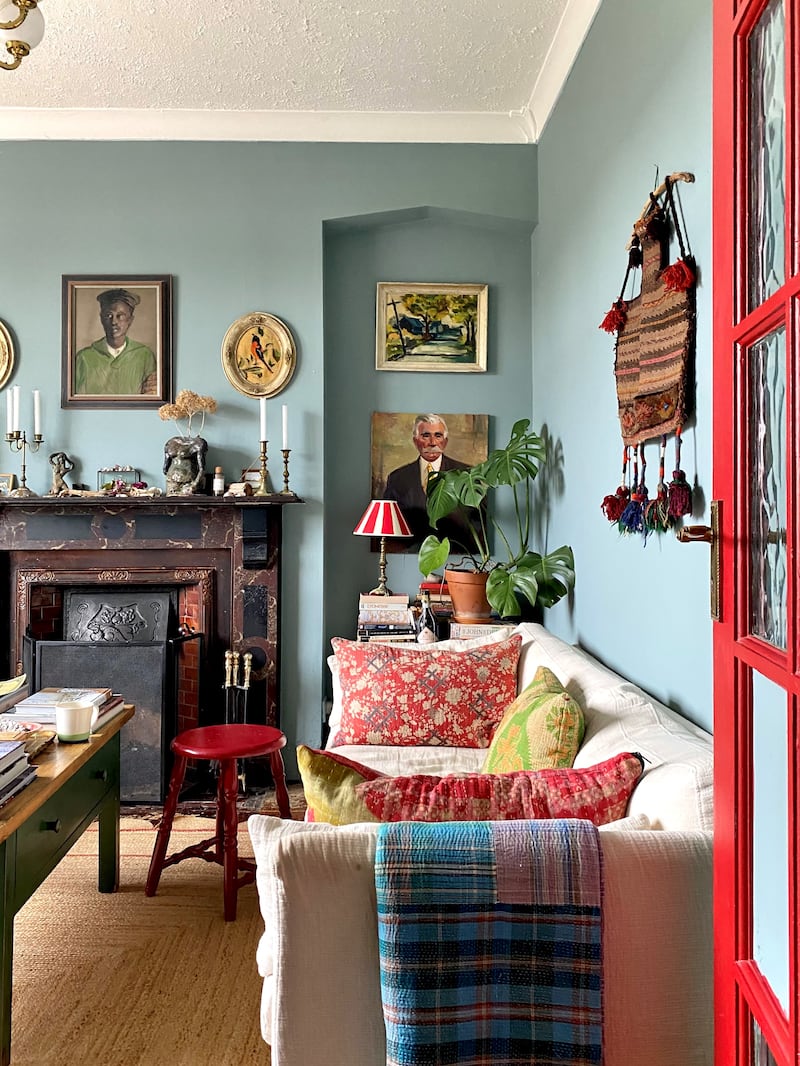Your home is your sanctuary. A place to relax, lay your head at night and to work from; as any renter will tell you, living in a magnolia prison is not exactly conducive to tranquillity or enjoyment. And aren’t you paying for the privilege to call those walls and that roof your home?
I’ve been a renter for 15 years and in my experience and that of my friends, we were mostly not allowed to make any significant changes to the properties we rented.
If we wanted to paint walls, we were asked to paint them back to their original colour when leaving, furniture could not be replaced, and no pictures or paintings could be hung.
We’ve all heard stories. Deposits being withheld in part or in full. I once had almost €200 taken off a deposit, because an agent found dust on the stairs after we left.
The South Dublin criminal from a wealthy family who became a close associate of the Kinahan gang
The Irish syndicate that beat the Lotto: ‘It wasn’t illegal to do what they did’
Middle East in maps: Key territories in the current conflict
What’s stopping us converting Dublin’s O’Connell St into a residential neighbourhood?
We had a professional cleaner in, but we moved some furniture after she had left and it apparently made a mess.
The consensus, between a lot of renters I’ve spoken to, seems to be to do as little as possible and try to spruce up your place with soft furnishings and knick-knacks, in an effort to get the much-needed deposit back.
Interior designer and renter Gillian Lawlee, of My Life in Colour, says “it depends on what you are starting out with”.

“I lived in the States for 20 years where rentals come unfurnished, so right off the bat, I was used to the idea that I would furnish my rental.”
Lawlee says home is a feeling, so it’s important for renters, especially when you’re young, to take their time finding pieces for their home.
“What is good about this experience is that it allows you to start developing your taste and curating a sense of individual style. I think what happens quite a lot is people move into a new house and then buy everything new, and in matching sets, and there is no sense of who these people are on a personal level. I think, within reason, collecting art, ephemera, special pieces of furniture passed on down through generations, or simply coming across a special piece that speaks to you, that you would love to own, serves you in the present and in helping shape your taste and idea of home.
“I cannot imagine living in a place that I did not make feel like my own and that did not contain items meaningful to me.”
Beyond furniture, Lawlee says the condition of your rental is another point of consideration before doing anything major such as painting, as well as how long you plan on living there.
“If somewhere is freshly painted, you will likely face pushback on making a change. However, if what you are doing is a clear improvement, then you are much more likely to get a yes. This tends to be true with most aspects of making changes to a rental, and if you do it well, you are likely to get approval.


“In our current rental, and previous rentals, I have painted the chipped old kitchen cupboards, changed the knobs, and put a fresh coat of white paint on the walls and ceiling, and it transformed how the space feels for very little money. We pulled out the really old carpet in our current rental, and have done so in previous rentals, and fixed up the floor underneath. It seems like a lot of work for some people, but for me, it pales in comparison to the daily stress of living with a carpet that has been through god knows how many tenants and not being able to relax and enjoy where I live.
“Ultimately, I think this effort comes down to what you personally need to feel at home and negotiate from there. One of the first things I think about in a space are textiles – specifically rugs and curtains. Fresh white linen curtains and a large area rug (often sisal) add texture, softness and cosiness to sterile-looking rental spaces. This is especially true if there is carpet. Keeping these items neutral means they will work in any space, should you need to move, but they also help with laying a foundation for whatever else you bring into the space.”

However, Lawlee recognises that most rental homes in Ireland come furnished, but “if you’re lucky, it will be minimal, so there is generally room to add meaningful pieces that can add character. Having your own throw, pillows and, if necessary, a cover over the couch, is a way to add your touch aesthetically and help make it feel like this is a place you can get cosy and relax in.
“Adding bookshelves or a vintage dresser unit adds interest and also gives you a place to add more personal decoration. Books add colour and warmth, and ceramics, vintage finds, and your kids’ ‘masterpieces’ add a personal touch that make it feel like home.”
Lawlee advises people to invest in good-quality second-hand wood furniture over trendy or cheaper products made from poorer materials.
Furniture placement should also be a consideration, Lawlee says.
“I find in rentals that are furnished, the furniture is often put in and pushed against the wall with no thought to how people will live in the space. Don’t be afraid to rearrange.
“A lot of Irish houses push the furniture against the walls instead of using the whole floor. Embrace this central area in a room. Embrace the idea of a proper coffee table. Load it up with art books, add a vase of flowers or a candle, and have a place for everyone to put their drink when you are sitting around.
She says plants can also make such a difference to the feeling and vibrancy of a home and you can take them with you.
“It’s so rewarding to have something that has grown with you move on with you. It adds an instant personalisation to your new home. Make sure they are potted properly and have a tray for water to avoid water damage to the surface below.”
If there was ever a change wanted, if it was fair and reasonable to expect things to be improved, we would ask the landlord to take it out of the rent, which was nearly always agreed. If the change was personal taste then we would just take the cost on
— Renter Stuart Robb
Stuart Robb, from Cork, has found landlords to be receptive to change in their properties in Dublin and Donegal.
In a ground-floor apartment in an old townhouse in Ranelagh, Robb and his partner got permission to make changes using the landlord’s money.
“In the place we rented in Ranelagh, it was a bit of an old townhouse divided into three separate apartments, where we had the ground floor. We had a property manager that everything went through, but the landlord was never far away so any time we wanted to do anything, we got permission to spend the landlord’s money doing work on the condition that it was done well but costs were reasonable.”
Robb says they replaced battered toilet seats, shower heads, door frames and an inspection was carried out to check how it went.
In total, Robb and his partner spent about €1,200 doing up the Ranelagh property. This included external painting, updating lighting and adding kitchen storage as time went by.
Robb has made changes costing about €2,750 to two other properties in Donegal. These changes included insulation upgrades, painting, carpets, curtains, blinds, resealing doors, updating fences and lighting.
He also says that if changes were fair and reasonable, they would ask the landlord to take the costs out of rent.
“If there was ever a change wanted, if it was fair and reasonable to expect things to be improved, we would ask the landlord to take it out of the rent, which was nearly always agreed. If the change was personal taste, then we would just take the cost on.
“We were happy to invest in what was going to be our home for a while, so didn’t mind the spend.”
His advice is to speak to your landlord first before doing or spending anything.
“Right now we’re renting, while we try to pull together everything to build our own home. The current house was refurbed just before we went in and it’s lovely. It has a little bit of damp and I need to sort a few small holes around pipes to stop wood lice, but it’s no biggie. We’ve dealt with a lot worse.”
How to make a rental feel like a home
Interior designer Aoife Maria Tobin of StyleSoSimple.com shares her tips on how to make a rental feel more like home.
1. Textiles
“A beautiful rug, some textured cushions, and throws can make a room feel more personal and layered. Adding artwork will bring a huge visual impact as well as show a renter’s personality.”
2. Lighting
“Lighting can transform a space – swap out basic lampshades for ones that better reflect your style, and consider lots of floor or table lamps to create a cosy ambience.”
3. Furniture
“Chat with your landlord and see about bringing your own furniture into your rental. My husband and I have been purchasing furniture over the past few years of renting, and now we have most of the furniture we need for our new home. It is always a great way to build your furniture collection for the future.”
4. Focus on the livingroom and bedroom
“These are spaces where you spend the most time, and they can easily be transformed with soft furnishings and thoughtful decor. In the livingroom, it’s all about creating a comfortable and inviting environment, which can be done through rugs, cushions and, above all, lighting. For the bedroom, bedding is key – luxurious bed linens and beautiful cushions can make a world of difference.”
- Sign up for push alerts and have the best news, analysis and comment delivered directly to your phone
- Join The Irish Times on WhatsApp and stay up to date
- Listen to our Inside Politics podcast for the best political chat and analysis













